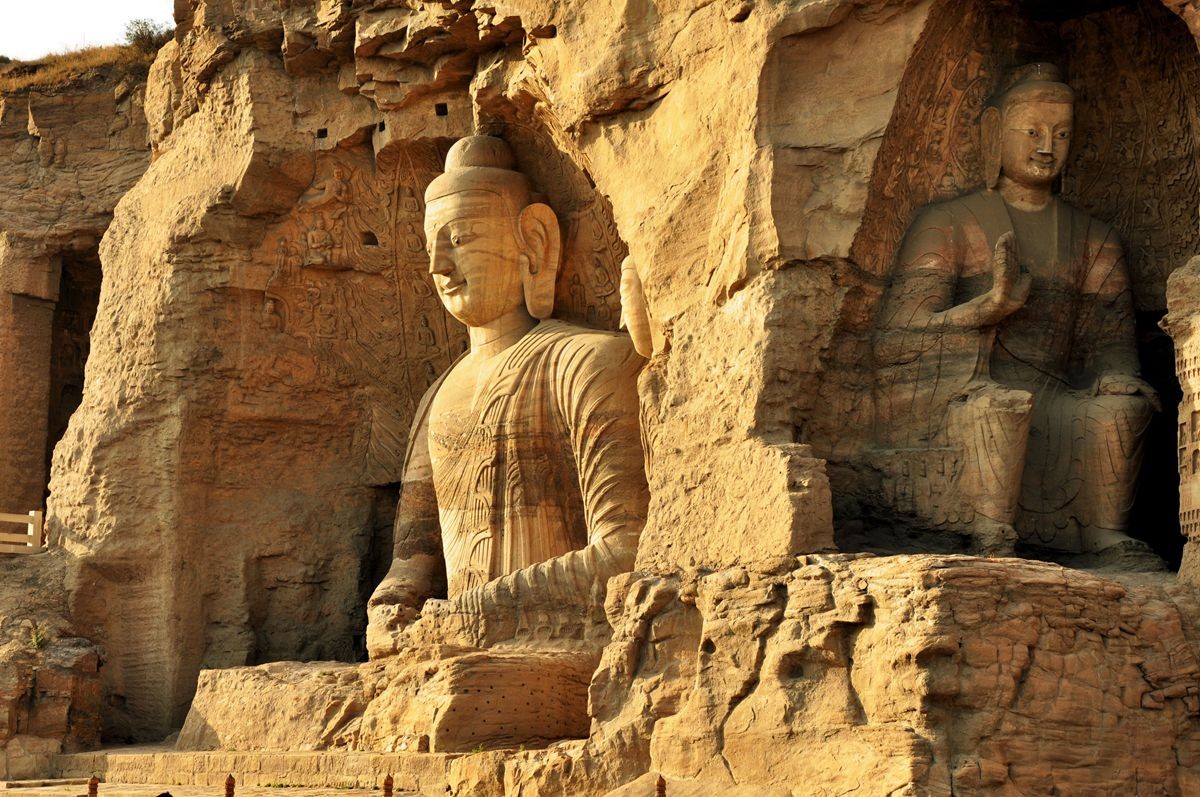In the mountains of Shanxi hides the Eastern Mecca of Buddhist artwork

The Yungang Grottoes, one of the four biggest grottoes in China, are grand in scale and rich in content.
The Yungang Grottoes are located on the south side of Wuzhou Mountain and the north bank of Shili River, which is 16 kilometers to the west of Datong City, Shanxi Province.
The 254 caves of all sizes, 45 major grottoes and more than 51,000 statues were all found in excavations on the side of the mountain, and together they extend about one kilometer from east to west. The Yungang Grottoes, one of the four biggest grottoes in China, are grand in scale and rich in content.
The exquisitely carved works of art and expressive statues represent a level of artistry unmatched in the world during the 5th century. Li Daoyuan, a famous geographer in the Northern Wei Dynasty (386-534), once described them in the Commentary on the Waterways Classic. He said they were excavated into the mountain because of the rock structure. They are unusual works of art that are rare in the world. With halls in the mountain and palaces on the water, smoke and temples face each other.
The Yungang Grottoes fully deserve their title as a masterpiece of Buddhist art and culture in ancient China.
The Yungang Grottoes were a royal construction project of the Northern Wei Dynasty. From 398, when Emperor Daowu relocated the capital to Datong, to 494, when Emperor Xiaowen moved the capital to Luoyang, Henan Province, Datong served as the center of politics, religion and culture in North China. A number of outstanding artists and craftsmen from all parts of the country gathered there. They absorbed and integrated various artistic styles from each other to jointly sculpt the magnificent Yungang Grottoes.
The Yungang Grottoes adopted new artistic styles, such as clay sculptures, murals and wood carving that stood contrast to the previous media, but mimicked large-scale grotto architecture in India. It was the first magnificent set of Buddhist grottoes in the East. It widely absorbed the artistic essence of statues from China and foreign countries and became the epitome of early Buddhist art in China.
The statues in the Yungang Grottoes can be divided into early, middle and late carving periods. The statue styles in each period have different characteristics: The early Tanyao Five Caves are large and have the simple and unsophisticated styles of the Western Regions, including today’s Xinjiang and parts of Central Asia. The caves of the middle period are famous for delicate carvings and beautiful decoration, revealing the complex, changeable and grand Northern Wei artistic style. Caves from the late period are smaller but the statues have thin and handsome faces and are in moderate scales, representing the typical grotto art in North China. They also showcase the style of statue known as “elegant skeleton and delicate features” of the Northern Wei Dynasty. In addition, carvings that depict music, dancing and acrobatics not only show the prevalent Buddhist attitudes at that time but also reflect lifestyles in the Northern Wei Dynasty.
The Yungang Grottoes provide a record of the evolution from Indian and Central Asian Buddhist art to Chinese Buddhist art, revealing that Buddhist statues gradually became secularized and nationalized in China. Various styles of Buddhist statues achieved integration in the Yungang Grottoes and the resulting Yungang pattern of statues represents a turning point in the history of Chinese Buddhist art. Although the prosperity of the Silk Road in the Northern Wei Dynasty only lasted for a century, the dynasty witnessed the encounter between Eastern and Western cultures, and hailed the eastward spread and boom of Buddhism and its art. As a shining pearl on the Silk Road, the Yungang Grottoes play an irreplaceable role in the spread of Buddhism to the East and cultural integration. The Mogao Grottoes in Dunhuang, the Longmen Grottoes in Luoyang and the many grotto statues from the Northern Dynasties (386-581) were all influenced by the Yungang styles to different degrees.
